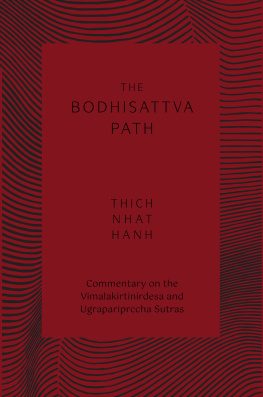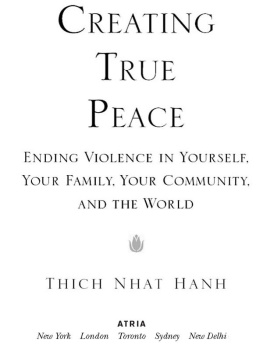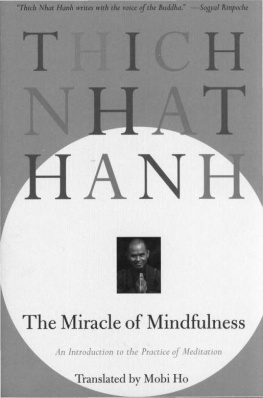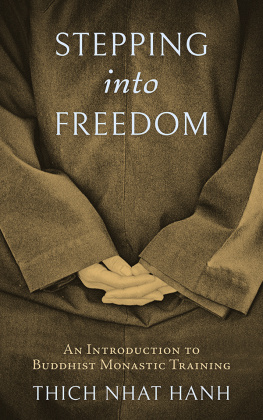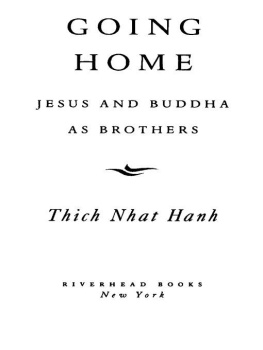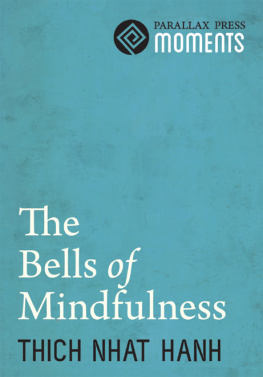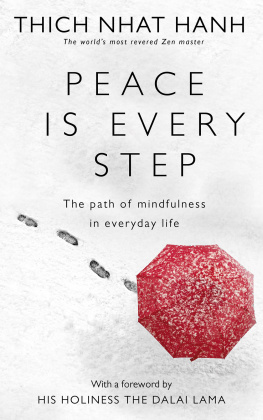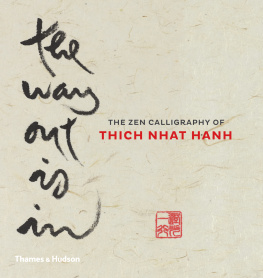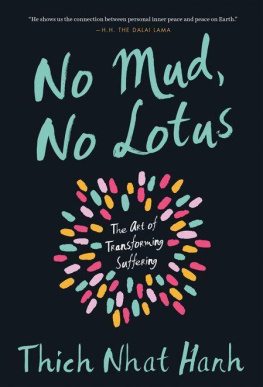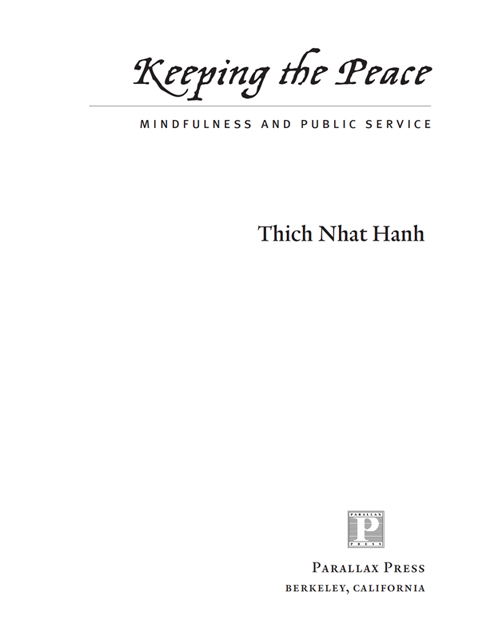Parallax Press
P.O. Box 7355
Berkeley, California 94707
www.parallax.org
Parallax Press is the publishing division of Unified Buddhist Church, Inc.
Copyright 2005, by Unified Buddhist Church.
All Rights Reserved.
This book is taken from talks given at the Protecting and Serving Without Stress or Fear retreat at Green Lake, Wisconsin in August of 2003.
Edited by Rachel Neumann.
Cover design by Gopa & Ted 2, Inc.
Library of Congress Cataloging-in-Publication Data
Nht Hanh, Thch.
Keeping the peace : mindfulness & public service / Thich Nhat Hanh.
p. cm.
ISBN 1-888375-48-5 (pbk.)
1. Peace of mindReligious aspectsBuddhism.
2. Spiritual lifeBuddhism. 3. Quality of work lifeUnited States. 4. Police-community relationsUnited States. 5. BuddhismSocial aspects.
I. Title.
BQ4570.P4N454 2005
294.337631dc22
Ebook ISBN: 978-1-935209-18-8
v3.1
Contents
Foreword
W HEN I BECAME a police officer in 1984, my deepest aspiration was to work for peace and to end violence and injustice. I quickly became intimately familiar, on a nightly basis, with the suffering caused by poverty, racism, social injustice, stealing, sexual abuse, domestic abuse, unmindful consumption, and oppression. I deeply craved peace, but I did not understand that peace began in my own heart. I felt overwhelmed by the suffering I witnessed, by public misunderstanding, and by the politics of my own department. The misplaced anger of others fanned my own impatience and anger. I began to do my job in a mechanical way. I consumed too much alcohol, and I became angry and depressed. As a result, I brought suffering into my relationships with my family and others.
I was curious but skeptical when I attended my first retreat with Thich Nhat Hanh in 1991. At that retreat, he and Sister Chan Kong convinced me that it was possible to carry a gun mindfully. I left the retreat believing I could integrate my public service and mindfulness. Slowly, over the next fourteen years, with the support of my local and international community, I began to develop my practice of mindfulness. With time, I was able to let go of my cynicism and open my heart.
I am still unskillful at times, but this experience of opening up to my sad and tender heart produced a fearlessness that enabled me to begin the process of transforming myself. I found the compassion that comes with being willing to be vulnerable and touched by the world. I also learned that being effective did not depend on my authority but, instead, depended on a larger coordinated effort to bring about peace in myself, my family, my workplace, and my community.
A non-sectarian retreat, held in August of 2003 at Green Lake, Wisconsin, called Protecting and Serving Without Stress or Fear, serves as the foundation of this book. It was a deeply transformative retreat, as public safety professionals shared deeply with others the fears and suffering they deal with every day as part of their jobs.
This remarkable retreat also demonstrated the healing and peacemaking power of community. Not long after attending the retreat, a woman was walking down a street in Madison, Wisconsin and witnessed two police officers arresting somebody and putting him into the back of a squad car. After closing the squad cars door, the officers turned, recognized the person from the retreat, and calmly and mindfully bowed, creating an island of peace and support in what otherwise could have been a chaotic moment.
Also noteworthy is the immeasurable gratitude I have for my spiritual community, the Snowflower Sangha. Without the dedicated hard work and deep support of so many Sangha members, this transformative retreat simply could not have occurred. If the retreat had not occurred, many seeds of peace would not have been watered. And this book might not be in your hands. It was a rich lesson in the power of community to create peace.
This book is not just for those in public service. Rather, it teaches all of us how to use mindfulness to maintain a balance of action, contemplation, and interaction in our lives. It will inspire you to create a sense of community and shared vision in your workplace. I firmly believe that our successful efforts will decrease the need for police involvement, prisons, wars, and even terrorist activities.
I bow to each person who reads this book and to the potential it will create in all of us to bring peace to ourselves, our communities, and the world. I offer a lotus to you, a buddha to be.
Cheri Maples, Administrator of Community Corrections for the State of Wisconsin
Introduction
Becoming Officers of Peace
T HIS BOOK is dedicated to those whose job it is to keep the peace. You may think that this does not include you. But police officers, corrections officers, and judges are not the only ones who practice law enforcement. As teachers, parents, and members of our community, we all must work to create and sustain peace.
This book uses the ideas of the Buddha and the Dharma to bring peace and mindfulness to people at work. What is Dharma? Dharma is the kind of insight, practice, and code of behavior that will bring about mutual understanding, compassion, peace, and happiness. Dharma is a Sanskrit term that can be translated as law. The practice of the Dharma is also the practice of law enforcement.
To understand what is happening to us at work, we need to look at our home life and our families. A family is a living organism that has the capacity to protect and heal itself. All living organisms have the capacity for mindfulness. When a virus penetrates the body of an organism, the body is mindful that it has been invaded. Antibodies are ready to resist the invader. The immune system is an agent of protection. If there are not enough antibodies, the immune system quickly produces more in order to cope with the invasion and sustain itself. In this way, the immune system is a reflection of the bodys mindfulness.
The practice of mindfulness helps us to build an immune system for our family. Suppose your child is suffering. If you are too preoccupied with other things, and your child is not able to handle the problem alone, he or she will try to ignore and disguise the suffering inside with unhealthy behavior. Unresolved suffering can affect the entire family. If we can embrace our familys suffering, as well as our own, then we can begin to heal.
There is a way to transform suffering and free ourselves from it. In order to find the way out, we must first understand the nature and origin of our own suffering. Once we have begun this work within ourselves, we can bring our understanding into our work environment, and use it to help the larger community whom we serve in our work. The needs of our personal life are not separate from those of our work life. Our inability to be mindful and bring our full attention to what we are doing has both personal and professional costs.
Beginning this healing at home will help us understand our situations at work, particularly if we work in public service or other high-stress occupations. If we are mindful, we can be fully present at work. Our work can become our community, giving us a foundation of strength and support as we begin doing service in the larger world.


